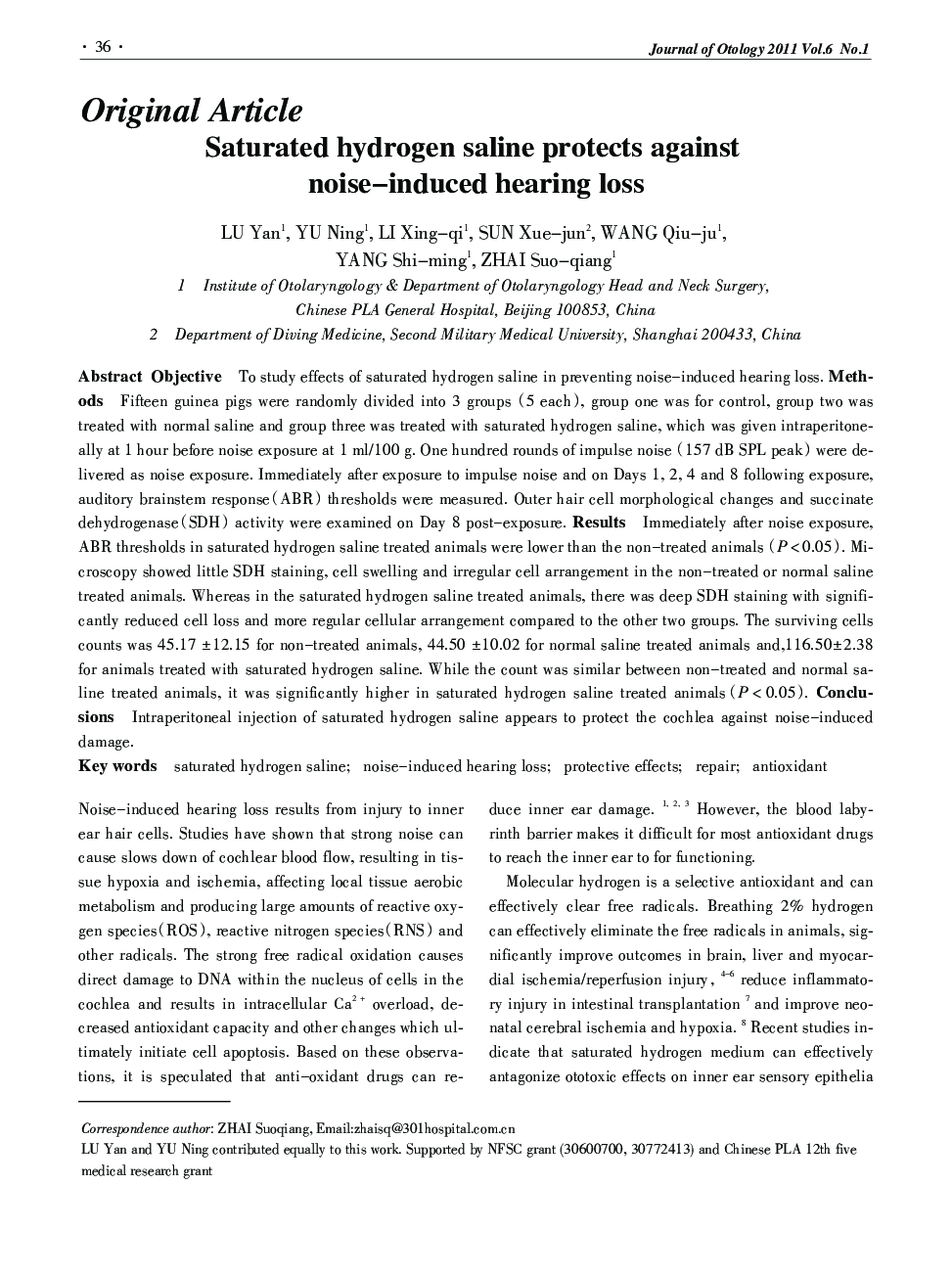| Article ID | Journal | Published Year | Pages | File Type |
|---|---|---|---|---|
| 4116747 | Journal of Otology | 2011 | 5 Pages |
ObjectiveTo study effects of saturated hydrogen saline in preventing noise–induced hearing loss.MethodsFifteen guinea pigs were randomly divided into 3 groups (5 each), group one was for control, group two was treated with normal saline and group three was treated with saturated hydrogen saline, which was given intraperitoneally at 1 hour before noise exposure at 1 ml/100 g. One hundred rounds of impulse noise (157 dB SPL peak) were delivered as noise exposure. Immediately after exposure to impulse noise and on Days 1, 2, 4 and 8 following exposure, auditory brainstem response (ABR) thresholds were measured. Outer hair cell morphological changes and succinate dehydrogenase (SDH) activity were examined on Day 8 post–exposure.ResultsImmediately after noise exposure, ABR thresholds in saturated hydrogen saline treated animals were lower than the non–treated animals (P < 0.05). Microscopy showed little SDH staining, cell swelling and irregular cell arrangement in the non–treated or normal saline treated animals. Whereas in the saturated hydrogen saline treated animals, there was deep SDH staining with significantly reduced cell loss and more regular cellular arrangement compared to the other two groups. The surviving cells counts was 45.17 ± 12.15 for non–treated animals, 44.50 ± 10.02 for normal saline treated animals and,116.50±2.38 for animals treated with saturated hydrogen saline. While the count was similar between non–treated and normal saline treated animals, it was significantly higher in saturated hydrogen saline treated animals (P < 0.05).ConclusionsIntraperitoneal injection of saturated hydrogen saline appears to protect the cochlea against noise–induced damage.
